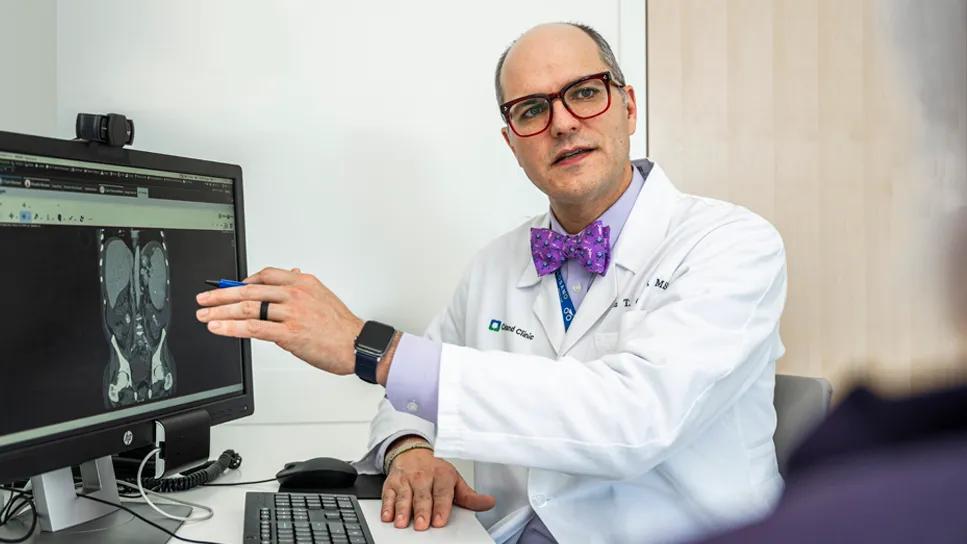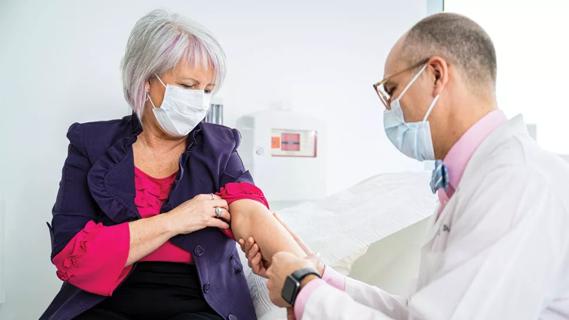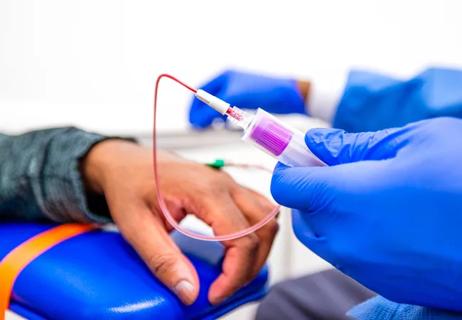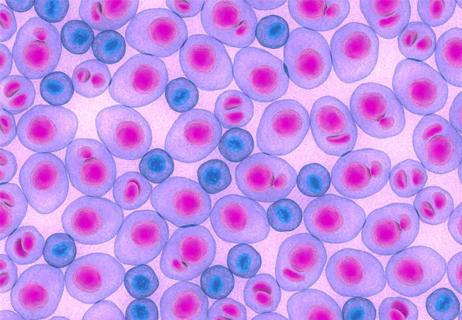What’s coming up at ASH and beyond

As we gear up for the 66th ASH Annual Meeting & Exposition, we're reflecting on the breathtaking advances in care, and considering the many hurdles left to scale in treating hematologic malignancies.
Advertisement
Cleveland Clinic is a non-profit academic medical center. Advertising on our site helps support our mission. We do not endorse non-Cleveland Clinic products or services. Policy
CAR T-cell therapies as standard of care. Cellular therapies are among the most potent breakthroughs in blood cancer treatment in recent years. "The most momentous change is that fact CAR T-cell therapy has gone from a concept to part of everyday practice, particularly in the fields of lymphoma and myeloma,” says Aaron Gerds, MD, a hematologist with Cleveland Clinic Cancer Institute. "It's remarkable what these cells can do targeting multiple refractory diseases."
Cellular therapies are becoming less toxic. In the early days of engineered T cells, cytokine release syndrome and neurotoxicity were so significant that patients spent considerable time in the hospital. Now with newer constructs being used, there are fewer side effects, to the point where these therapies can sometimes be administered on an outpatient basis.
New cell therapy targets. Cellular therapies are now being developed to attack different targets. “We’re even seeing patients who have received one cell therapy who receive a different cell therapy with a new target for the same disease,” explains Dr. Gerds.
Optimizing treatment sequence. Commercially available bispecific antibodies are moving forward in lines of therapy for lymphoid disorders and myeloma. ALL treatment is a prime example. “Blinatumomab has been around for several years. As it’s moved forward in therapies, many patients experience deep remissions, to the point where we can’t detect the disease anymore, even with our most advanced pathology and genomic sequencing technologies,” says Dr. Gerds. “This is a pretty consistent pattern we're seeing in lymphomas, myelomas and acute leukemias where immunotherapies are being moved closer to the front line, often resulting in deep, durable responses."
Advertisement
Artificial intelligence. AI is already being used to identify patients for specific clinical trials. AI tools now include natural language models that can actually read a patient chart and understand its meaning in sequence time order to determine potential trial eligibility. It’s likely we’ll see a whole host of new developments in the AI field in the coming months and years.
Amid all the advances, there are still many obstacles that researchers are looking to overcome in improving outcomes.
Studying rare diseases. Many hematologic diseases are already rare to start with, making it difficult to generate reliable data sets. As medicine becomes more personalized, researchers will be challenged to understand smaller subsets of these diseases. "We can look under a microscope and interrogate genes to define someone’s disease, but then what do we infer from that? The more we’re defining disease by genomics, that breaks things up into smaller and smaller subsets of disease. I think the challenge for care for patients as well as bettering the therapies for patients in the future is, how do we treat a disease that is defined in such a way where almost every patient disease is nearly individual," says Dr. Gerds.
This year’s ASH annual meeting is expected to draw nearly 30,000 clinicians and scientists to view some 8,000 abstracts. Several that Dr. Gerds noted include:
Abstract 221
Gilteritinib Results in Higher Remission and Transplant Rates Than Midostaurin but Does Not Increase the Post-Induction Mutational MRD Negative Rate
“I expect this data is going to help immediately guide our practice in the newly diagnosed population,” says Dr. Gerds.
Abstract 129
The Influence of Postpartum Hemorrhage on Patient Reported Outcomes Among Women with Von Willebrand Disease: The Pregnancy and Inherited Bleeding Disorders Study (PRIDES)
“This study is for the classical hematology practitioners, but I think it brings up important points outside of hematology because it's a trial that involves the idea of including people who are pregnant in clinical trials,” says Dr. Gerds.
Abstract 773
Phase 3 Randomized Study of Daratumumab Monotherapy Versus Active Monitoring in Patients with High-Risk Smoldering Multiple Myeloma: Primary Results of the Aquila Study
“This study focuses on the fact that even when myeloma is smoldering it should be treated, and this can improve outcomes,” says Dr. Gerds.
Abstract 1
Blinatumomab Added to Chemotherapy Improves Disease-Free Survival in Newly Diagnosed NCI Standard Risk Pediatric B-Acute Lymphoblastic Leukemia: Results from the Randomized Children’s Oncology Group Study
“This is another study that considers a vulnerable population – in this case children – in clinical studies,” says Dr. Gerds.
“ASH is an incredible time of year for hematologists worldwide to come together, push to get reinvigorated for the rest of the year, see how far we've come and look forward to how far we're going to go,” concludes Dr. Gerds.
Advertisement
Advertisement

Lutheran Hospital team brings emerging treatments to community setting

Researchers Assess Real-Life Experiences of Patients Treated Outside of Clinical Trials

Early, individualized diagnosis and comprehensive management key to preserving fertility

Key considerations when diagnosing and managing severe hyponatremia

Study demonstrates ability to reduce patients’ reliance on phlebotomies to stabilize hematocrit levels

A closer look at training, scholarship and opportunity within this sub subspecialty

First-in-human trials of CRISPR-Cas12a gene editing demonstrate safety and meaningful event-free survival

Strategies and risk models are evolving for this asymptomatic condition